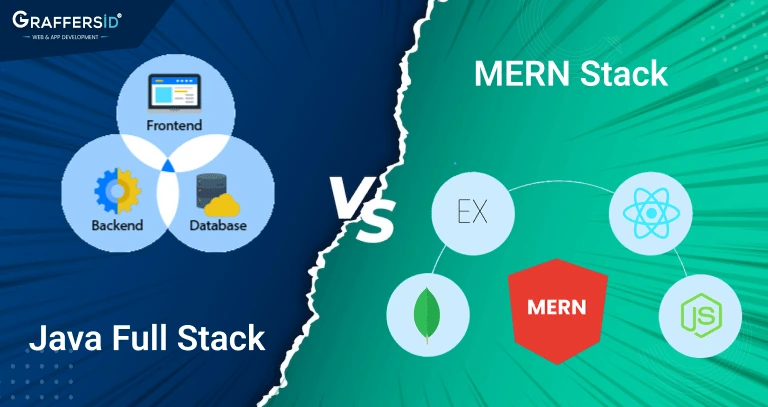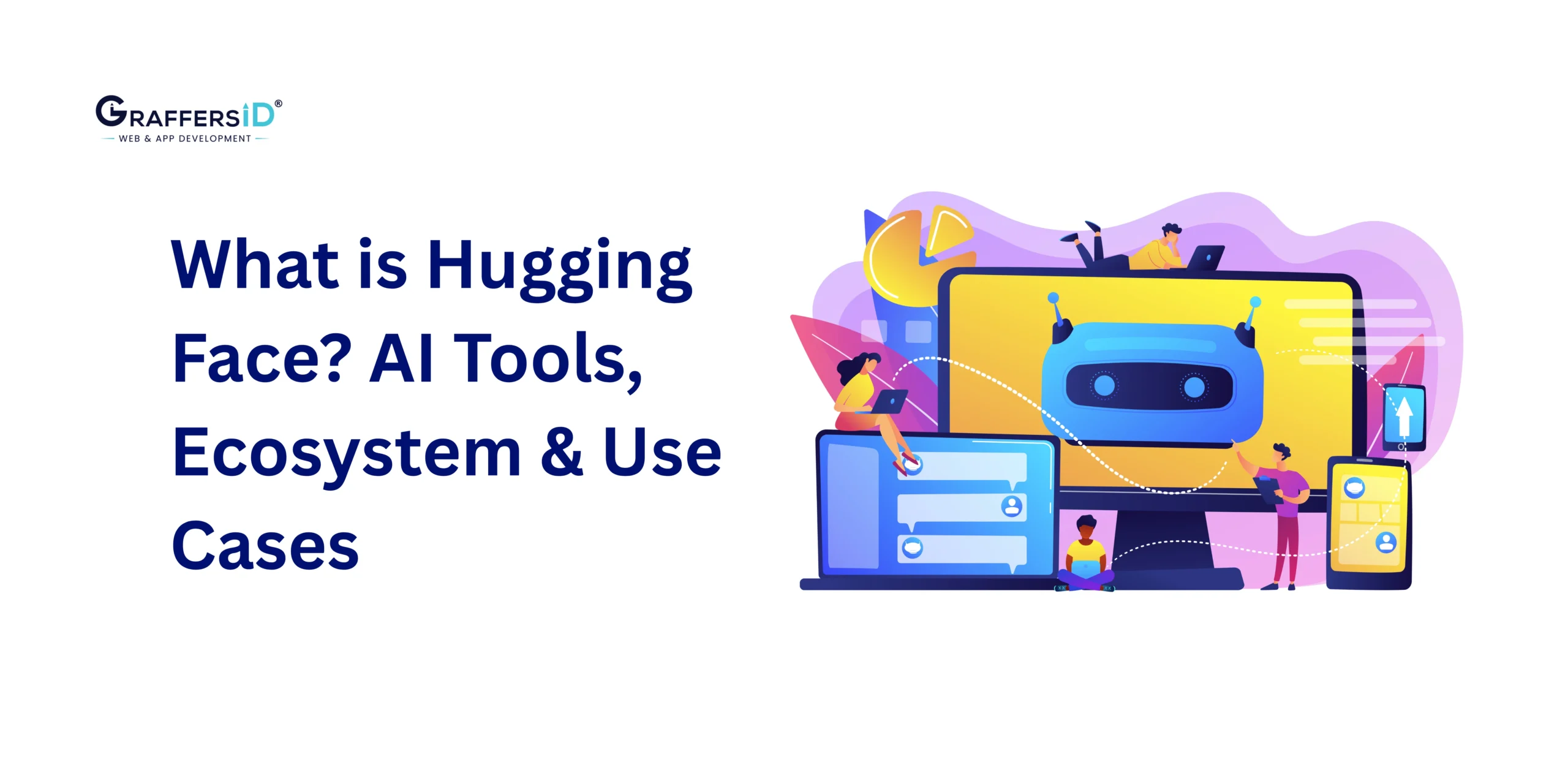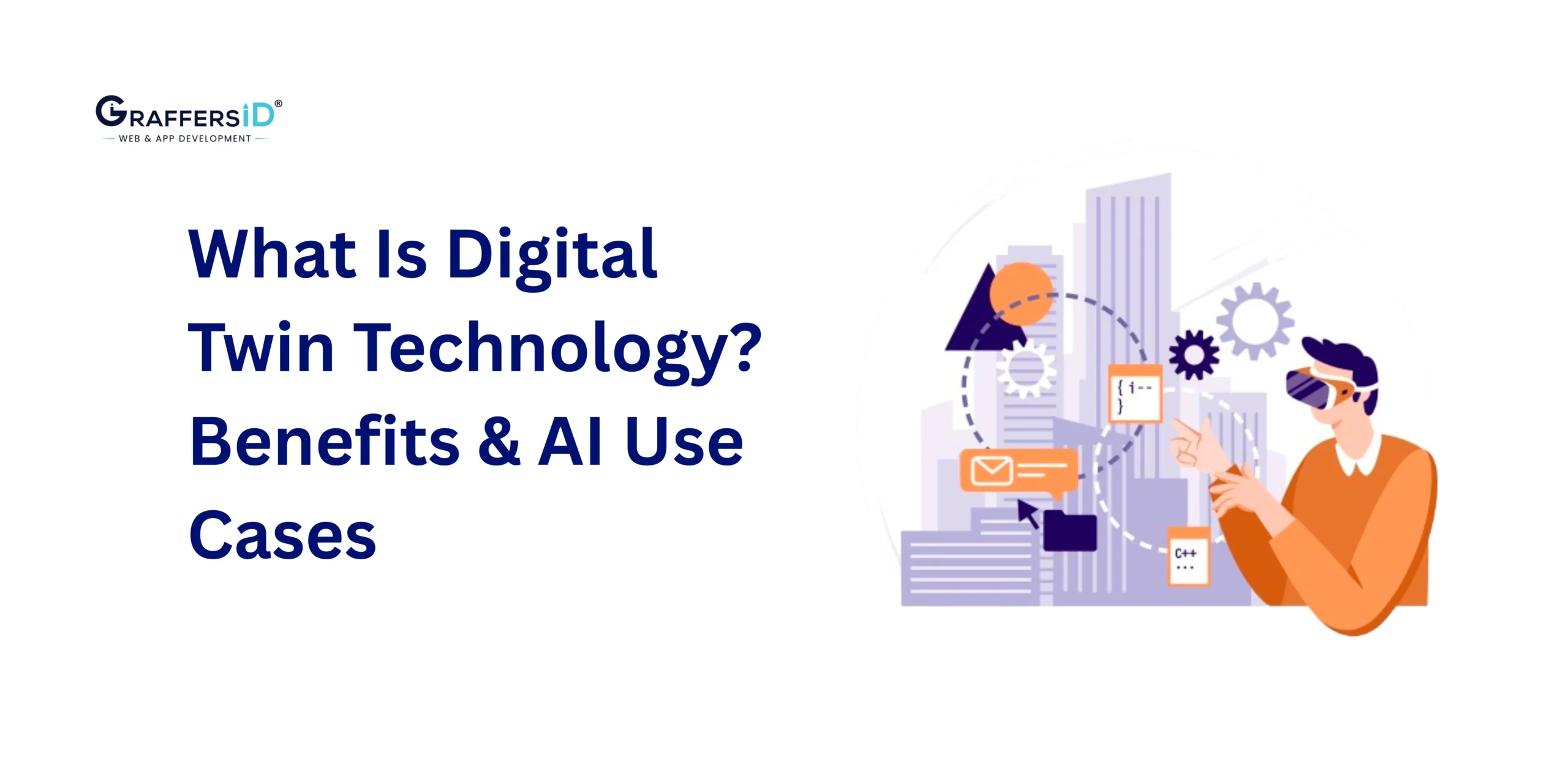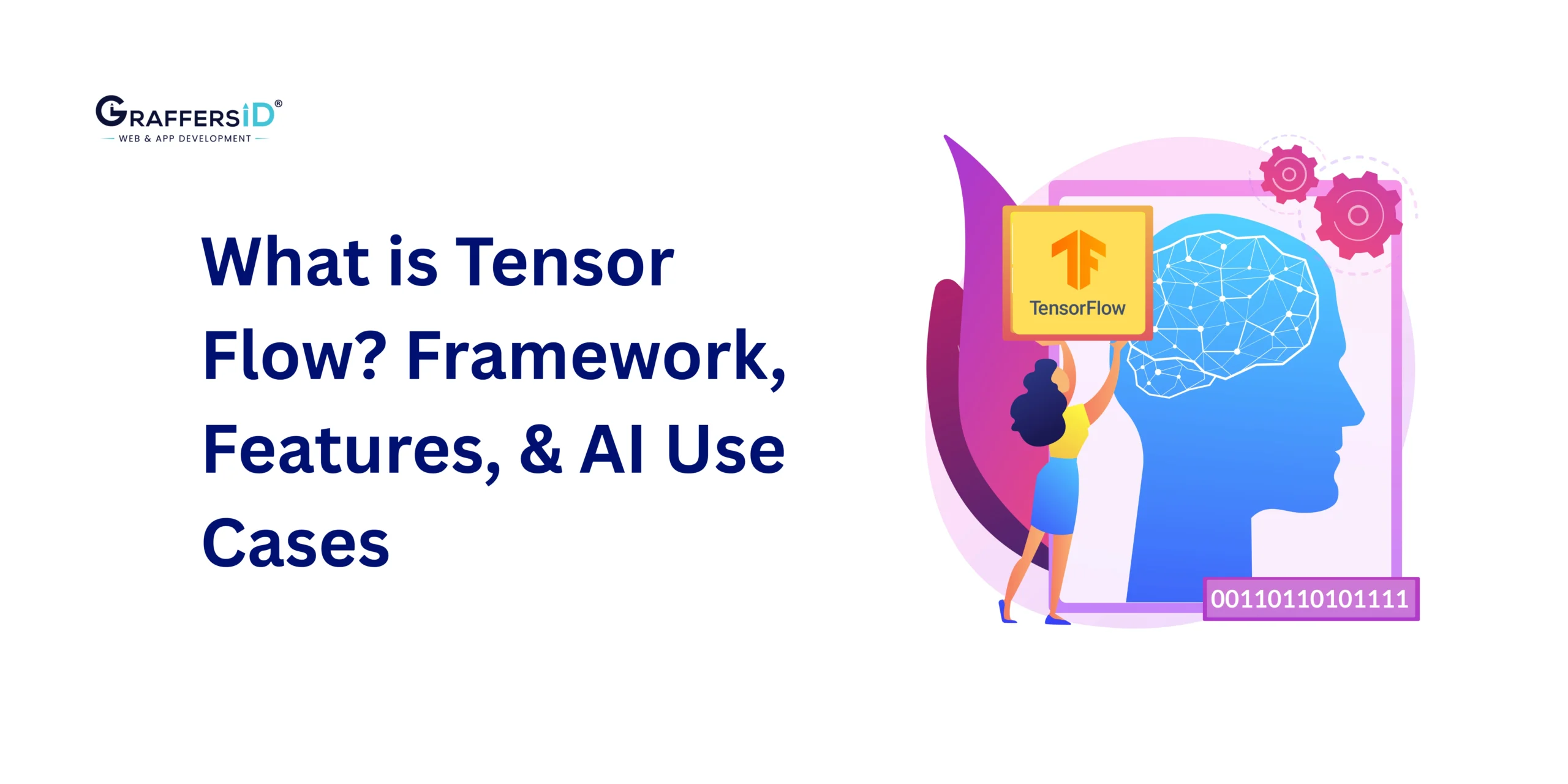Choosing a technology stack in 2026 is no longer just about coding preferences; it’s a business-critical strategy. With AI-assisted coding, automation-first workflows, low-code accelerators, and cloud-native infrastructures becoming the norm, the right stack determines not only how fast you build but also how well your product scales, adapts to AI integrations, and stays secure.
Among the countless options, two stacks continue to dominate conversations: Java Full Stack vs. MERN Stack. Both are powerful and proven but serve different business needs, from startup MVPs to enterprise-grade platforms.
So, which one should you choose in 2026? Should you go with the speed and flexibility of MERN, or the enterprise-grade robustness of Java Full Stack? Let’s break it down: features, advantages, limitations, and how AI and modern trends are reshaping both stacks.
What is the MERN Stack?
The MERN stack: MongoDB, Express.js, React.js, and Node.js, remains one of the top choices for startups, SaaS products, and mid-sized businesses. Its appeal lies in being JavaScript-only, simplifying development and allowing teams to scale quickly.
Best Fit in 2026: SaaS startups, marketplaces, SPAs, AI-powered web apps, and real-time dashboards.
Components of MERN Stack
Let us examine each component of the MERN stack and its function:
1. MongoDB: NoSQL Database for Scalable Apps
MongoDB is a document-oriented NoSQL database that stores data in a JSON-like format. This flexible schema makes it easier for developers to:
-
Scale applications quickly on cloud-native environments (AWS, Azure, MongoDB Atlas).
-
Run real-time queries and analytics, now enhanced with AI-driven query optimization in 2026.
-
Store unstructured and structured data seamlessly for modern SaaS and AI-powered apps.
2. Express.js: Lightweight Backend Framework
Express.js is the backend framework that runs on top of Node.js. It simplifies server-side development by:
-
Providing powerful routing and middleware for APIs.
-
Reducing boilerplate code, making backend logic easier to manage.
-
Supporting RESTful APIs and GraphQL, essential for AI-first and microservices architectures in 2026.
3. React.js: Frontend for Dynamic User Interfaces
React.js remains one of the most popular frontend libraries in 2026, powering everything from single-page applications (SPAs) to progressive web apps (PWAs). Its strengths include:
-
Reusable components for faster UI development.
-
Virtual DOM for high performance.
-
Integration with React Server Components and AI-driven UI tools to automatically generate layouts and improve accessibility.
4. Node.js: Runtime for Fast, Scalable Apps
Node.js is a JavaScript runtime environment built on Chrome’s V8 engine, allowing JavaScript to run outside the browser. Its benefits include:
-
Event-driven, non-blocking I/O makes it ideal for real-time apps like chats, live collaboration, and streaming.
-
A massive npm ecosystem with pre-built packages to speed up development.
-
Compatibility with Deno and Bun (emerging runtimes in 2026), but still the most trusted for enterprise-grade apps.
Read More: MEAN Stack vs MERN Stack: Which is Better Technology Stack
Advantages of MERN Stack in 2026
The MERN stack is widely known for its flexibility, scalability, and developer-friendly ecosystem. The following are the main advantages of MERN for your next project:
-
Unified JavaScript Development: Faster prototyping with one language across frontend & backend.
-
AI-Enhanced Development: MERN integrates seamlessly with AI copilots (GitHub Copilot, CodeWhisperer, Tabnine), accelerating coding cycles.
-
Cross-Platform Flexibility: Build web, mobile (React Native), and desktop apps with shared codebases.
-
Server-Side Rendering + SEO: Next.js + React improves SEO-readiness, overcoming older JavaScript indexing issues.
-
Massive Ecosystem: Thousands of npm libraries, frameworks, and active open-source support.
-
Cloud-Native Ready: Works well with microservices, containerization (Docker), and serverless (AWS Lambda, Vercel, Netlify).
Do you want to build faster, scalable apps? Hire remote MERN developers!
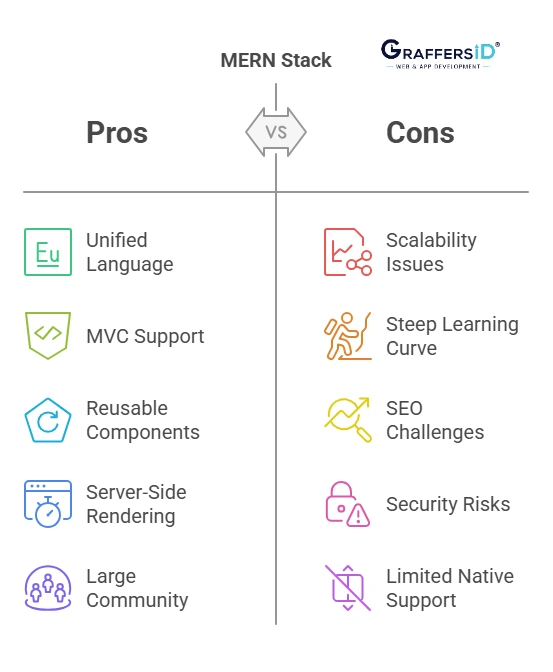
Limitations of MERN Stack
While the MERN stack offers several advantages, it also comes with a few limitations:
- Enterprise-Scale Complexity: May not be the best for multi-layered banking, ERP, or compliance-heavy systems.
- Security Risks: Heavy reliance on third-party npm packages increases vulnerabilities if not monitored.
- Talent Saturation: Many MERN devs are entry-level; scaling with highly experienced engineers may be harder than Java.
- Advanced Features Require Add-ons: For AI pipelines, background jobs, or large-scale transactions, you often need extra libraries.
What is the Java Full Stack?
Java Full Stack refers to web applications built with Java backend + flexible frontend technologies. Unlike MERN, which is all JavaScript, Java full-stack uses Java for business logic and enterprise-grade systems, while allowing Angular, React, or Vue on the frontend.
It continues to dominate banking, fintech, healthcare, ERP, and government systems in 2026 because of security, stability, and enterprise trust.
Best Fit in 2026: Banking apps, ERP, insurance platforms, eGov systems, AI-backed enterprise software.
Components of Java Full Stack
To understand how Java fits into full-stack development, let’s break down the three major layers it touches:
1. Frontend Layer
- HTML, CSS, JavaScript + frameworks (React, Angular, Vue).
- Many enterprises pair Java + React for modern UI/UX.
- AI-driven frontend testing tools (e.g., Playwright + AI) now streamline QA.
2. Backend Layer
- Core Java + Spring Boot (still the most trusted enterprise backend).
- Spring Security & OAuth2 for compliance-ready security.
- Hibernate + JPA for ORM and relational DB integration.
3. Database Layer
- Strong ties with MySQL, PostgreSQL, and Oracle DB.
- Increasing use of NoSQL (MongoDB, Cassandra) in hybrid Java architectures.
- AI-enabled query optimization improves database performance in 2026.
4. Integration & DevOps
- Jenkins, Docker, Kubernetes for CI/CD.
- Microservices & API Gateways for enterprise architecture.
- Cloud-native deployments via AWS, GCP, Azure.
Advantages of Java Full Stack in 2026
Java full-stack remains a popular choice for large-scale enterprise projects. Here’s why:
-
Enterprise Trust: Banking, finance, and healthcare continue to rely on Java’s proven stability.
-
Security First: Built-in features + Spring Security = compliance-ready stack (GDPR, HIPAA, PCI DSS).
-
AI Integration: Java integrates with AI models (TensorFlow Java, Deeplearning4j, ONNX Runtime).
-
Platform Independence: JVM ensures portability across platforms.
-
Scalable Architecture: Suited for microservices and distributed enterprise systems.
-
Strong Talent Pool: Experienced Java architects are widely available for enterprise-grade projects.
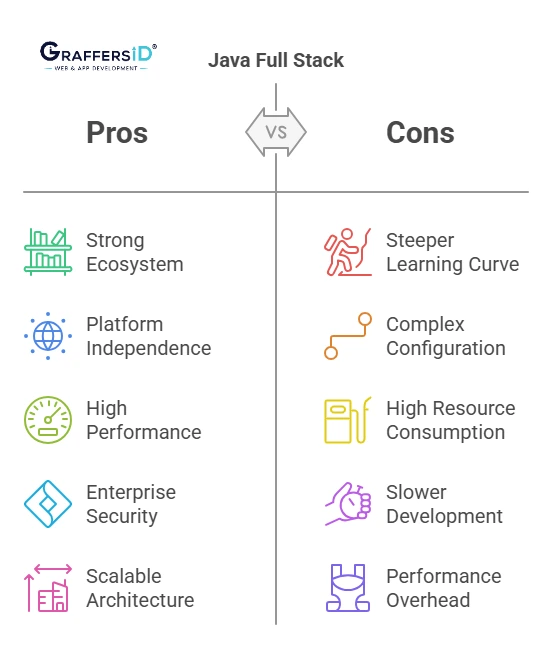
Limitations of Java Full Stack
Despite its advantages, Java full-stack comes with a few drawbacks:
-
Verbose & Slower Development: Compared to MERN’s quick prototyping.
-
Resource-Heavy: Higher memory/CPU usage.
-
Complex Deployment: Requires JVM setup and often more infra compared to serverless-friendly stacks.
-
Learning Curve: Tougher for new devs vs JavaScript.
Java Full Stack vs. MERN Stack: 2026 Comparison
| Factor | MERN Stack | Java Full Stack |
|---|---|---|
| Performance | Fast for I/O-heavy & real-time apps | Stronger for CPU-heavy, enterprise workloads |
| Scalability | Cloud-native horizontal scaling | Vertical + microservices scaling for enterprises |
| Development Speed | Faster MVP/prototyping | Slower, but structured & maintainable |
| Learning Curve | Easier for web devs (JS only) | Steeper; CS background helps |
| Security | Manual implementation, 3rd-party risks | Built-in enterprise-grade security |
| Community & Ecosystem | Startups, SaaS, open-source | Enterprises, Oracle/Spring ecosystem |
| AI & Modern Trends | AI copilots + Next.js for SEO | AI/ML frameworks + enterprise AI adoption |
Java Full Stack vs. MERN Stack: Feature-by-Feature Comparison
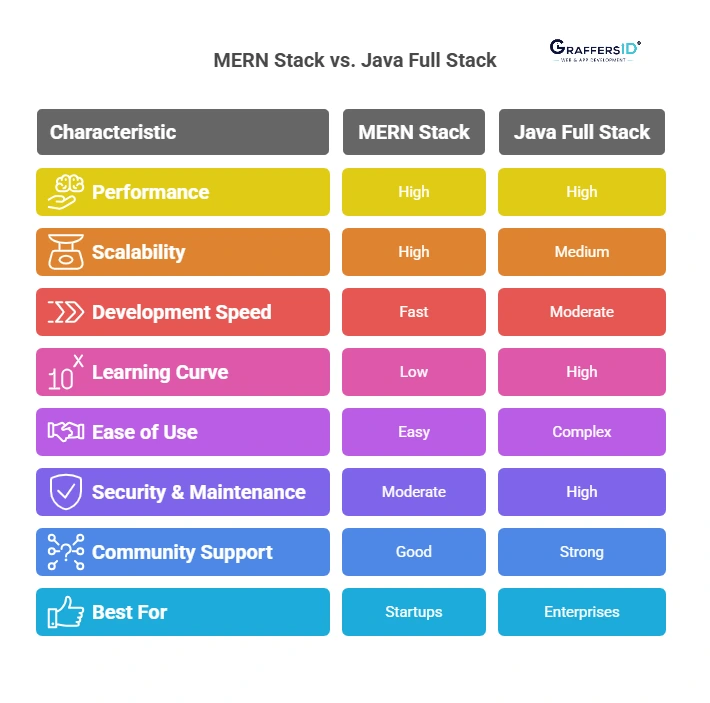
1. Performance
- MERN Stack: Uses Node.js, which is event-driven and asynchronous. This is ideal for apps needing to handle many requests at the same time (e.g., chat apps, live collaboration tools). Since JavaScript runs on both client and server, the data flow is smooth and fast for I/O-heavy tasks.
- Java Full Stack: Java’s strong multi-threading capabilities and robust JVM (Java Virtual Machine) make it better for CPU-intensive applications like complex enterprise systems, big data processing, or banking platforms.
2. Scalability
- MERN Stack: Designed for horizontal scaling, meaning you can add more servers to handle growth. Good for cloud-native apps, microservices, and modern web apps.
- Java Full Stack: More suited to vertical scaling (upgrading server capacity), which fits large enterprise ecosystems with stable architecture and lots of interdependencies.
3. Development Speed
- MERN: Uses JavaScript across the stack, which simplifies development and shortens the learning curve. React allows quick front-end development with reusable components. Faster prototyping and MVP launches.
- Java Full Stack: Involves multiple tools (Spring Boot, Hibernate, JSP/Thymeleaf, etc.) and configurations. Takes longer, but offers solid structure and maintainability. Ideal for stable, large, and secure platforms.
4. Learning Curve & Ease of Use
- MERN Stack: Simpler for new developers who know JavaScript or front-end. Numerous online resources are available, including YouTube tutorials and open-source support.
- Java Full Stack: Steep learning curve due to the object-oriented nature of Java, configuration-heavy frameworks like Spring, and XML/annotation usage. Better suited for developers with a Computer Science background.
5. Security & Maintenance
- MERN: Needs manual implementation of security features (e.g., JWT, input validation, CORS). Open-source tools may have issues if not updated. Requires extra attention to secure coding practices.
- Java Full Stack: Known for strong built-in security, backed by Java EE and Spring Security. Preferred for handling sensitive data, compliance needs, and user authentication.
6. Community Support & Ecosystem
- MERN: Supported by Facebook (React) and Node.js Foundation. A robust, rapidly evolving ecosystem of modules, plugins, and community assistance.
- Java Full Stack: Java is mature with decades of enterprise trust, a huge community, and vast documentation. Strong support from Oracle, Spring community, and enterprise architects.
Factors to Consider While Choosing Between MERN vs. Java Full Stack
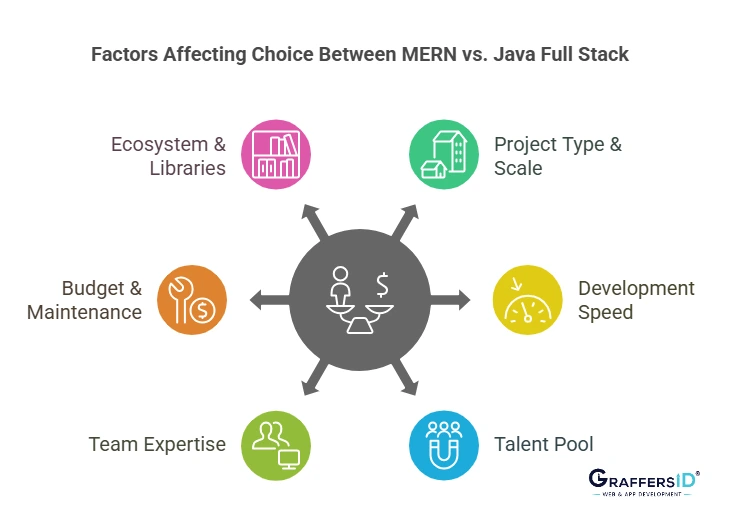
When picking between the MERN stack and the Java full-stack, various factors are important to consider. Each project has its own set of requirements, and understanding these affecting factors allows you to make an informed choice.
1. Type and Scale of the Project
- Use MERN for flexible, quick-to-deploy applications.
- Use Java full-stack for mission-critical, enterprise-level apps.
2. Development Speed & Time-to-Market
- MERN provides faster prototyping and deployment.
- Java is better when thorough testing and stability are priorities.
3. Available Talent Pool
- JavaScript/MERN developers are abundant and cost-effective.
- Java developers tend to have more experience and are common in enterprise settings.
4. Team Expertise & Stack Familiarity
- Choose the stack your team is already experienced in.
- Consider training time and onboarding costs.
5. Project Budget and Long-Term Maintenance
- MERN is cost-effective for short-term, quick-to-market solutions.
- Java full-stack offers long-term reliability and maintenance ease for critical systems.
6. AI & Automation Needs
- The MERN stack should be chosen for AI-enhanced UI/UX, automation-friendly.
- Java full-stack is better for AI in enterprise-grade apps (fraud detection, compliance).
Which Stack Should You Choose in 2026?
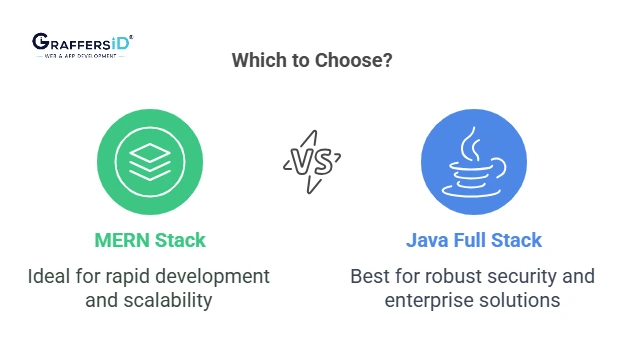
- Choose MERN Stack if you’re a startup, SaaS business, or product company that values speed, agility, and a strong front-end experience.
- Choose Java Full Stack if you’re building complex, enterprise-ready, AI-integrated platforms that require high security, compliance, and scalability.
Conclusion
In 2026, both MERN and Java Full Stack remain top technology choices, but they serve very different goals. MERN powers the fast, flexible, AI-friendly digital products, while Java Full Stack continues to secure its place in enterprise-grade ecosystems.
Your decision should align with your business objectives, project scale, compliance needs, and available developer expertise.
At GraffersID, we help businesses build both MERN-based modern apps and Java full-stack enterprise platforms. Hire our expert developers to bring your project to life with the latest AI-driven, scalable, and secure solutions.
